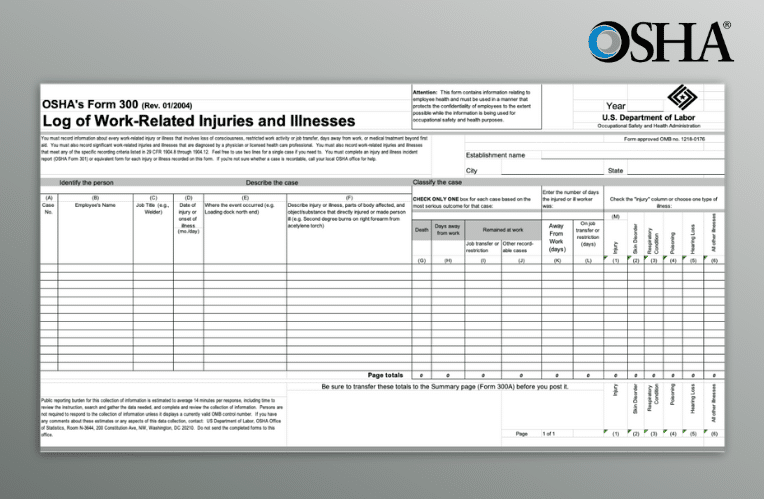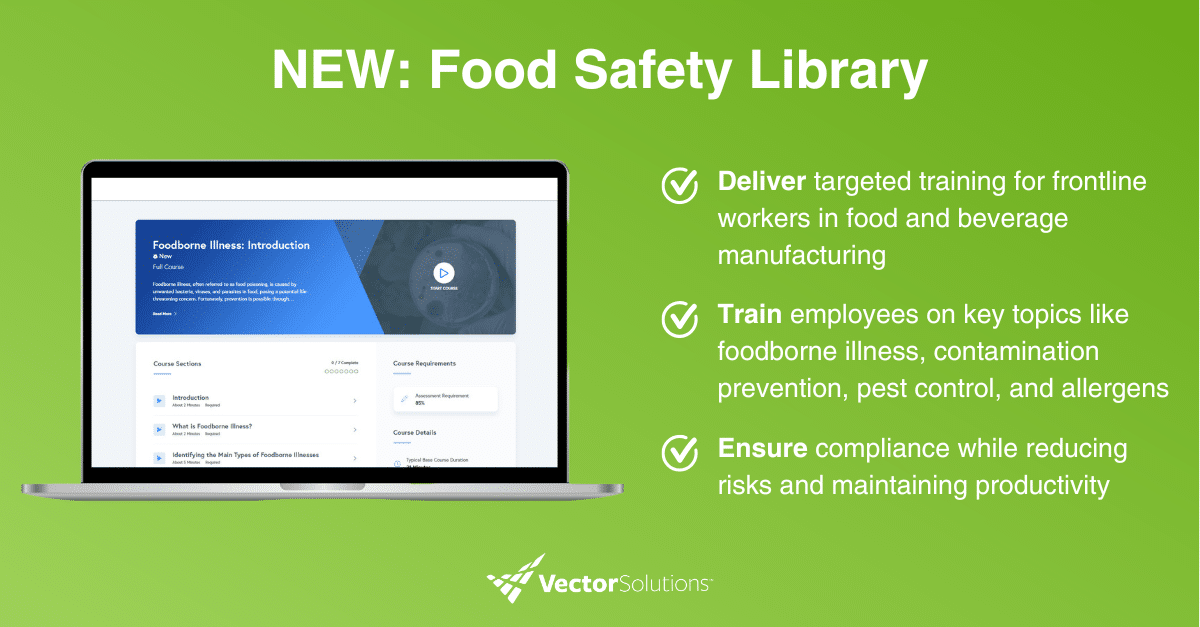July 1, 2024 5 min read

Guide to OSHA Recordable Work-Related Injury or Illness
Industry:
Solution:

In the realm of workplace safety management, understanding what constitutes an OSHA recordable work-related injury or illness is crucial for employers. This guide explores the criteria, requirements, and implications of OSHA recordkeeping, providing clarity on compliance and best practices.
What Is an OSHA Recordable Work-Related Injury or Illness?
An OSHA Recordable Work-Related Injury or Illness is a work-related incident that results in death, days away from work, restricted work or job transfer, medical treatment beyond first aid, loss of consciousness, or a significant diagnosis by a healthcare professional, as outlined by the Occupational Safety and Health Administration (OSHA). The primary objective of recording such incidents is to ensure accurate tracking of workplace injuries and illnesses, which aids in identifying hazards and implementing preventive measures.

Understanding OSHA Recordable Criteria
OSHA mandates the recording of injuries or illnesses that fall into several categories:
- Fatalities: Any work-related death is considered recordable.
- Days Away from Work: Cases where an injury or illness leads to missed workdays.
- Restricted Work: Instances where employees are unable to perform their regular job duties due to the injury or illness.
- Medical Treatment: Situations requiring medical treatment beyond first aid.
- Diagnosed Cases: This includes conditions like cancer, chronic irreversible diseases, fractures, or punctured eardrums.
- Special Criteria Cases: Injuries involving needlesticks, sharps, medical removal, hearing loss, tuberculosis, etc.
Some incidents are both recordable and reportable, depending on their severity and impact on workplace safety. Understanding these distinctions is crucial for effectively managing workplace incidents and ensuring comprehensive compliance with OSHA regulations.
OSHA Reporting & Recordkeeping Guide
This guide will prepare EHS Professionals with a comprehensive understanding of OSHA’s rules and requirements for recording an injury or illness as we explain reporting, recording, and online reporting requirements in detail.
Get the Guide
Differentiating Between OSHA Recordable and Reportable Incidents
It’s essential to distinguish between recordable and reportable incidents.
Recordable incidents require documentation on OSHA Forms 300, 300A, and 301 for internal records and are subject to specific criteria. These criteria include fatalities, days away from work, restricted work or job transfer, medical treatment beyond first aid, loss of consciousness, or significant diagnoses by a healthcare professional.
Reportable incidents, on the other hand, must be promptly reported to OSHA when they result in severe outcomes such as fatalities or hospitalizations of multiple employees. This immediate reporting ensures that OSHA can investigate and address workplace hazards promptly, helping to prevent future incidents and ensure compliance with regulatory requirements.
It’s important to note that an incident can be both reportable and recordable, depending on its severity and impact on workplace safety. Understanding this distinction is crucial for effective safety management and regulatory compliance.
Employers Subject to OSHA Recordkeeping
In general, employers with more than 10 employees are required to maintain OSHA injury and illness records. However, some industries categorized as low-risk by OSHA may be exempt from certain recordkeeping requirements.
Additionally, on July 17, 2023, the U.S. Department of Labor announced a final rule requiring certain employers in designated high-hazard industries to submit data from all three forms electronically to the agency annually by March 2. It’s essential for employers to understand their specific obligations based on industry classification and workforce size.
Determining Work-Relatedness
The concept of “work-relatedness” under OSHA guidelines hinges on whether an event or exposure in the work environment caused or significantly contributed to the injury or illness. This determination is critical for accurately documenting incidents and ensuring compliance with recordkeeping regulations.
Understanding First Aid Definitions
Not all injuries requiring first aid are considered recordable under OSHA guidelines. The administration of minor treatments, such as using non-prescription medications or applying bandages, typically does not necessitate recording unless they escalate to medical treatment beyond first aid.
OSHA Forms and Reporting Obligations
Employers must adhere to specific OSHA forms for recording and reporting work-related injuries and illnesses. These forms serve crucial roles in maintaining workplace safety records and ensuring regulatory compliance.
OSHA Form 300
Form 300 is used to log all work-related injuries and illnesses in detail. It requires employers to document each incident, including the nature of the injury or illness, affected body part, and circumstances of the event. Accurate completion of Form 300 entries is essential for reflecting the true safety conditions of the workplace.
OSHA Form 300A
Form 300A summarizes the recorded incidents from Form 300 on an annual basis. Employers must compile this summary and prominently post it in the workplace from February 1st through April 30th of the following year. This posting requirement enhances transparency and informs employees about the overall safety performance of the workplace.
OSHA Form 301
Form 301 provides detailed documentation for each specific injury or illness recorded on Form 300. It includes information such as the employee’s name, job title, sequence of events leading to the injury or illness, and the treatment provided. Form 301 aids in establishing comprehensive records for incident analysis, medical response evaluation, and administrative purposes.

Need Help with your OSHA Recordkeeping?
Comprehensive knowledge of OSHA recordable injuries and illnesses is fundamental to promoting workplace safety and regulatory compliance. By adhering to these guidelines, employers not only fulfill legal obligations but also prioritize the well-being of their workforce.
Vector EHS Management Software connects all areas of safety into one easy-to-use platform. Safety managers can easily generate 300A Logs for both single and multiple locations using our Incidents Module.
EHS professionals can also use our software to generate 300A Logs in a CSV file format, compatible with OSHA’s electronic submission requirements. Manage your entire environmental health and safety program in our configurable system to save time and improve efficiency in your safety department with Vector EHS Management.
To learn more about our OSHA recordkeeping software, request a demo today.















